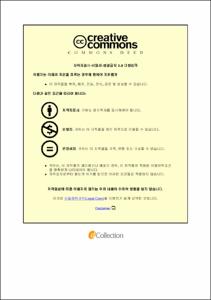방사선 저항성 두경부암 세포주에서 당대사의 Sirtuin3 의 역할 규명
- Abstract
- Abstract
Radiotherapy has been used one of the conventional treatments for cancer, along with surgery, chemotherapy. However, the obtaining of radio-resistance that is a major cause of failure and recurrent cancer remains a serious obstacle to successful treatment. Therefore, understanding and overcoming of the radio-resistance mechanism in the absence of therapy for recurrent cancer will be helpful for the positive prognosis of radiation therapy. The present study discussed the differences between cancer cells and recurrent cancer cells, and their regulatory mechanism.
First, we established a stable radio-resistant cells by fractionated irradiation at 2 Gy until accumulated dose of 70 Gy and confirmed by using clonogenic assay. And then,we analyzed their metabolic profiles and mitochondrial respiration. As a result, glucose uptake and lactate production were increased, and glycolysis metabolites were increased in HN3R. Quantitative real-time PCR (qRT-PCR) showed that enzymes involved in glucose metabolism were also increased. Also, Oxygen consumption rate (OCR) test showed that mitochondrial function was significantly decreased in HN3R compared to HN3. In addition, to measure the dependence on glucose metabolism, Glucose deprivation and Hexokinase inhibitor (2-Deoxyglucose, 2DG) and lactate dehydrogenase-A inhibitor (AT101) were treated. So, we knew the HN3R cell line was further dependent on Glucose. Recently, mitochondrial SIRT3 is attracting attention as a major deacetylase mediating various energy metabolism. Accordingly, we confirmed that the expression level of SIRT3 was significantly decreased in the HN3R compared to the HN3. And then, we established SIRT3 overexpression in HN3R to confirm whether SIRT3 induces sensitivity to glucose. In SIRT3 overexpressed HN3R, when glucose deprivation was performed and when the glycolytic inhibitors, 2DG and AT101, were treated, the cell survival was restored in the experimental group compared to the control group. SIRT3 activators, resveratrol (RSV) and honokiol (HNK), were also treated to increase the expression level of SIRT3, and the cell survival was also restored in the experimental group. On the contrary, we found that SIRT3 knockdown in HN3 using siRNA transfection increased glucose dependence in the glucose deprivation experiment.
Collectively, these data show that the expression of SIRT3 is decreased and the glucose dependence is increased by Glycolytic shift in the process of obtaining radio-resistance. Finally, it is expected that the regulation of glucose metabolism as a potential therapeutic target in recurrent cancer with reduced SIRT3 expression after radiotherapy will provide important baseline data to clarify the mechanism of radio-resistance acquisition process and to escape the cure limit.
- Issued Date
- 2019
- Awarded Date
- 2019-08
- Type
- Dissertation
- Alternative Author(s)
- Hyejin Jang
- Affiliation
- 울산대학교
- Department
- 일반대학원 의과학전공
- Advisor
- 김승후
- Degree
- Master
- Publisher
- 울산대학교 일반대학원 의과학전공
- Language
- eng
- Rights
- 울산대학교 논문은 저작권에 의해 보호받습니다.
- Appears in Collections:
- Medical Science > 1. Theses (Master)
- 파일 목록
-
-
Download
 200000220509.pdf
기타 데이터 / 1.01 MB / Adobe PDF
200000220509.pdf
기타 데이터 / 1.01 MB / Adobe PDF
-
Items in Repository are protected by copyright, with all rights reserved, unless otherwise indicated.